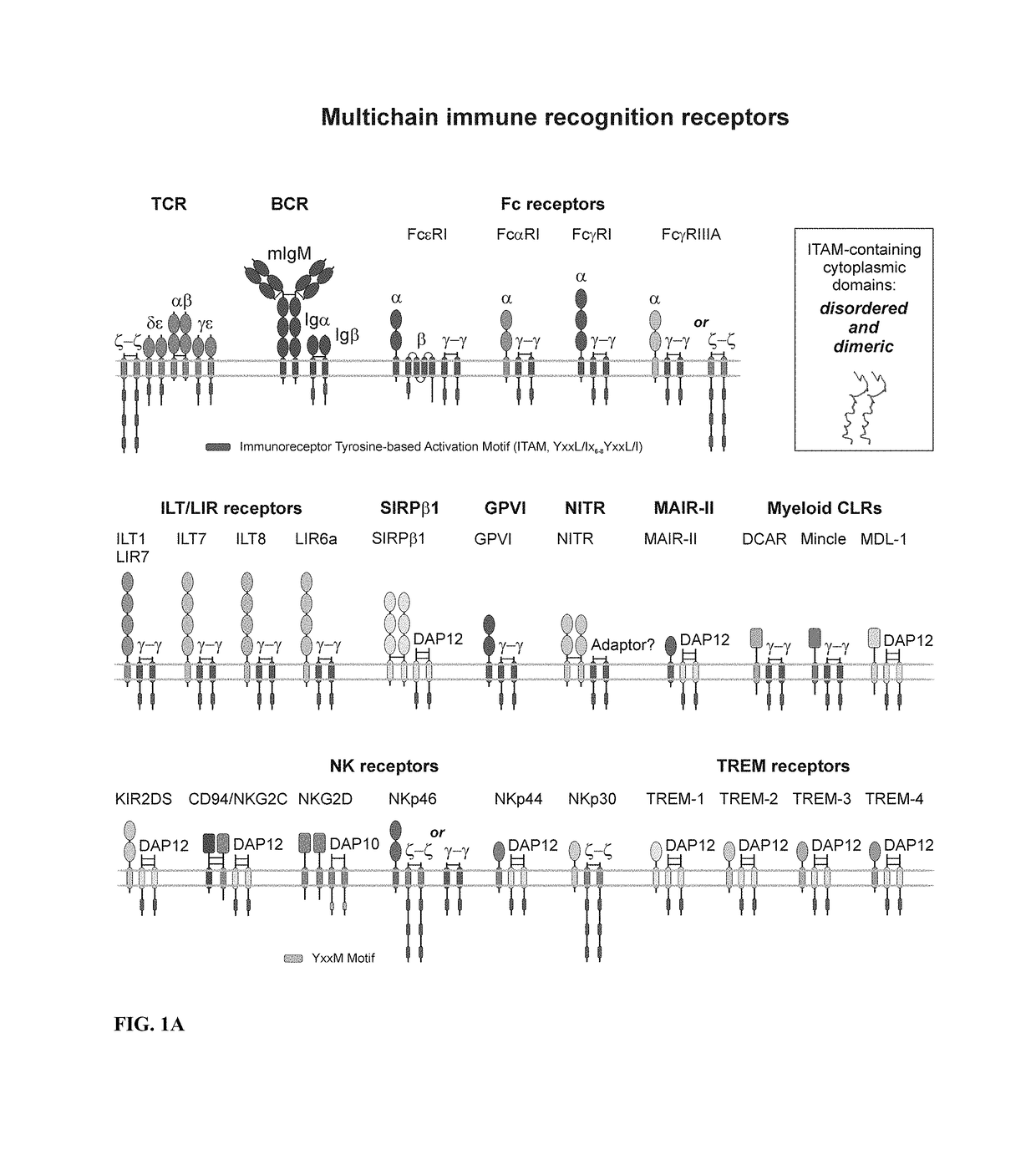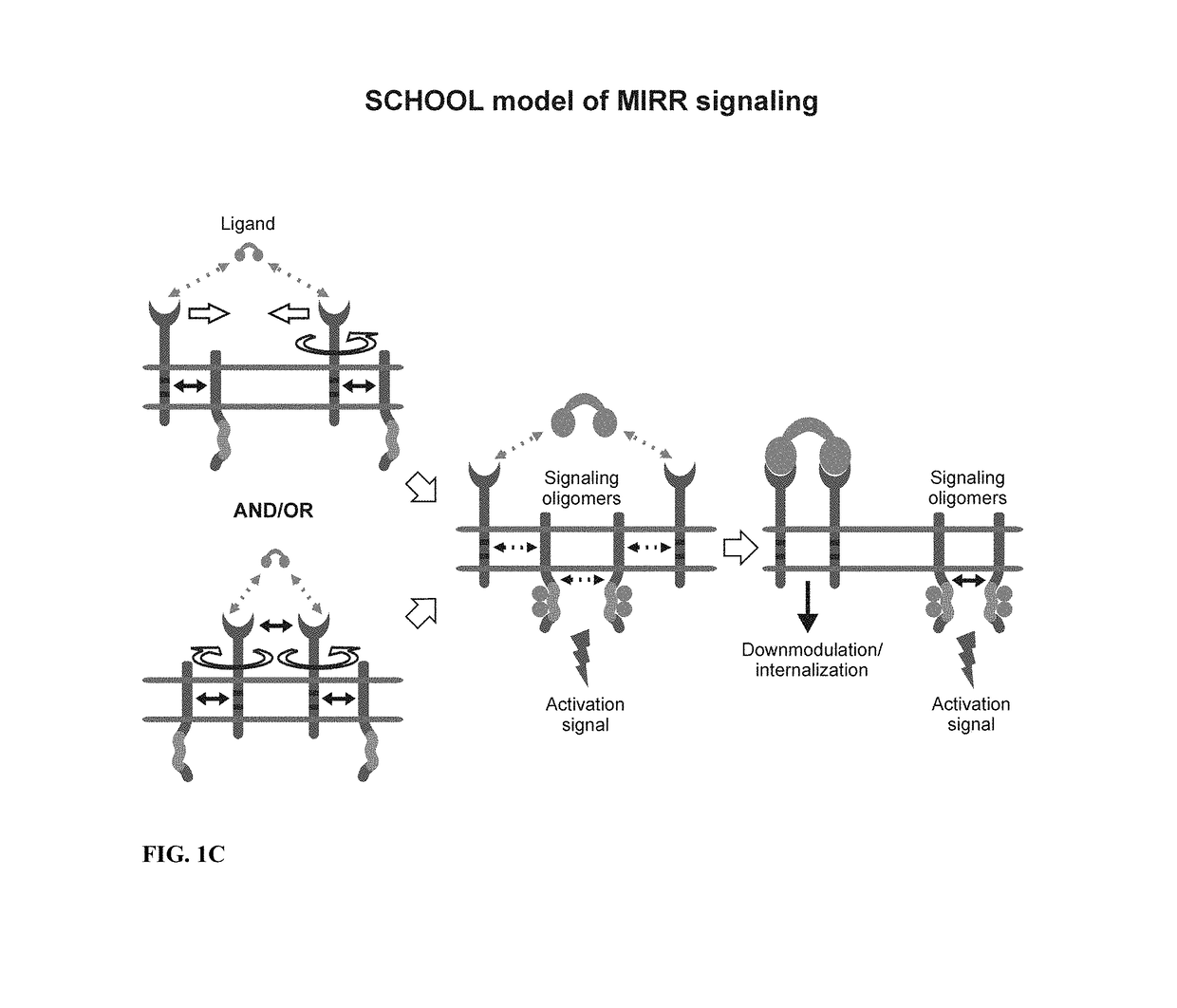Inhibition of TCR signaling with peptide variants
a technology of tcr and peptides, applied in the field of inhibition of tcr signaling with peptide variants, can solve the problems of infection of antibody preparations by prions or viruses, serious disadvantages of antibody therapy,
- Summary
- Abstract
- Description
- Claims
- Application Information
AI Technical Summary
Benefits of technology
Problems solved by technology
Method used
Image
Examples
example 1
of Peptides
[0309]This example demonstrates one embodiment of a synthesized SARS-CoV fusion protein-related peptide.
[0310]The first step is to synthesize the short hydrophobic peptide corresponding to the SARS-CoV fusion peptide sequence. Although it is not necessary to understand the mechanism of an invention, it is believed that this peptide affects T cell receptor assembly and may interact with the ζζ homodimer and CD3δε heterodimer in a competitive fashion.
[0311]The synthesis of peptides may involve the use of protecting groups. Peptides can be synthesized by linking an amino group to a carboxyl group that has been activated by reaction with a coupling agent, such as dicyclohexylcarbodiimide (DCC). The attack of a free amino group on the activated carboxyl leads to the formation of a peptide bond and the release of dicyclohexylurea. It can be necessary to protect potentially reactive groups other than the amino and carboxyl groups intended to react. For example, the α-amino group...
example 2
y
[0315]This example demonstrates that the hydrophobic properties of SARS CoV FP peptides and other peptides and compositions of the present invention may be overcome without risking cell toxicity.
[0316]The SARS CoV FP and SARS CoV FP-AA peptides can be noted to be hydrophobic and insoluble in aqueous solutions. A variety of solvents and carriers can be tested to improve their solubility. Solvents and / or carriers that improve solubility of CP and CP-A include, but not limited to, ethanol, dimethylsulphoxide (DMSO), dimethyl formamide (DMF), and trifluoracetic acid (TFA). When using DMSO as a solvent, the final concentration used in the platelet function experiments can range from 0.063%-0.250%. DMSO concentrations greater than 1% is believed to be toxic to cells. Stock solutions of SARS CoV FP and SARS CoV FP-AA can be prepared in DMSO and used at a 1:2000, 1:1000, or 1:400 dilution.
example 3
f T Cell Receptor Inhibitory Peptides of Viral Origin on Antigen-Stimulated Proliferation on Rat Primed Lymph Node Cells (PLNC) and T Cell Lines
[0317]A. Cells
[0318]The following cell lines can be used as described in (US Pat. Appl. 20050070478) and incorporated herein by reference: 2B4.11, a murine T call hybridoma that expresses a complete antigen receptor on the cell surface and produces IL-2 following antigen recognition (cytochrome-c); an interleukin-2 (IL-2) dependent T cell line (CTLL) for conventional biological IL-2 assays; and the B-cell hybridoma cell line LK 35.2 (LK, 1-Ek bearing) which acts as the antigen presenting cell. The hybridomas is grown in T cell medium (RPMI-1640 media containing 10% fetal calf serum (FCS), gentamycin (80 μg / ml), glutamine (2 mM) and mercaptoethanol (0.002%)). The African green monkey kidney fibroblast cell line (COS) is grown in Dulbecco's modified Eagle's medium (DMEM) supplemented with 10% FCS.
[0319]B. Antigen Presentation Assay
[0320](Samel...
PUM
| Property | Measurement | Unit |
|---|---|---|
| concentration | aaaaa | aaaaa |
| concentrations | aaaaa | aaaaa |
| volume | aaaaa | aaaaa |
Abstract
Description
Claims
Application Information
 Login to View More
Login to View More - R&D
- Intellectual Property
- Life Sciences
- Materials
- Tech Scout
- Unparalleled Data Quality
- Higher Quality Content
- 60% Fewer Hallucinations
Browse by: Latest US Patents, China's latest patents, Technical Efficacy Thesaurus, Application Domain, Technology Topic, Popular Technical Reports.
© 2025 PatSnap. All rights reserved.Legal|Privacy policy|Modern Slavery Act Transparency Statement|Sitemap|About US| Contact US: help@patsnap.com



